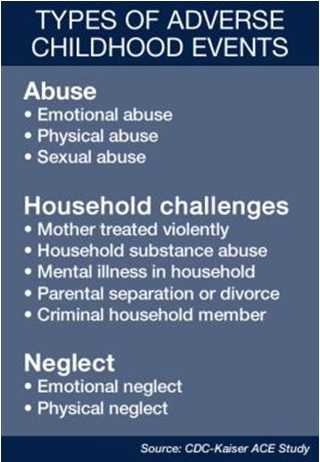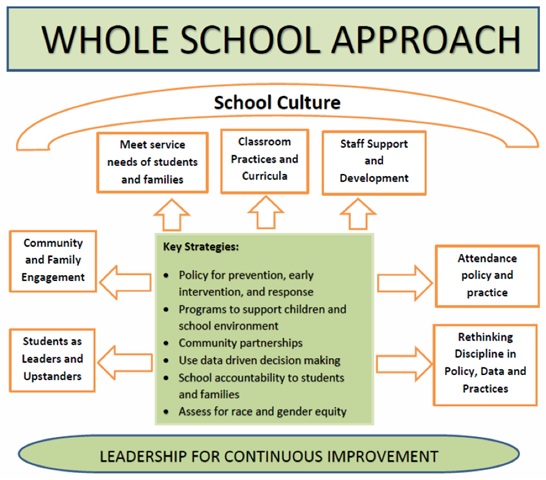End Curriculum Violence With These Constructive Approaches
17th March 2023
Curriculum violence when repeated throughout the school year can have adverse effects on the students and such individual instances can contribute to a larger traumatic experience. Hence educators, administrators, and stakeholders need to understand what curriculum violence is and look for ways to prevent it. To make your job easier, here we have everything you need to know about the trauma related to curriculum violence. Keep reading on.
What Is Curriculum Violence?
Well, to look out for ways to prevent it, you first need to comprehend what curriculum violence really is. Curriculum violence refers to the harmful effects of educational curricula on the social, emotional, and intellectual development of students. It occurs when the content, methods, or structure of a curriculum perpetuates systemic oppression, reinforces stereotypes, or excludes diverse perspectives.
When students are exposed to such forms of violence in the classroom, it can lead to trauma, which can have significant long-term effects on their mental health, academic performance, and overall well-being.
One example of curriculum violence is the erasure of marginalized groups from history and literature, which reinforces the idea that only the experiences of dominant groups are valuable or worth studying. Another example is the use of language and examples that perpetuate sexism, racism, homophobia, transphobia, or ableism. Curriculum violence can also be seen in the ways in which certain subjects are taught or prioritized over others.
Signs the Students Are Experiencing Curriculum Violence-Related Trauma

Source: psych.ucsf.edu
Here are some symptoms that show students are traumatized by the curriculum taught to them:
- Fear and Anxiety
Students may feel anxious or stressed when they are exposed to material that reinforces stereotypes, promotes violence or presents a biased view of certain groups. They may feel afraid to express their opinions, participate in class discussions, or challenge the dominant narrative.
- Disengagement and Withdrawal
Students may disengage from classroom activities, lose interest in learning, and withdraw from social interactions with their peers. They may become apathetic or disconnected and may not participate in class discussions or complete assignments. Disengagement and withdrawal can be coping mechanisms for students who feel overwhelmed by the curriculum violence they are exposed to.
- Aggression and Anger
Students may become argumentative, confrontational, or physically aggressive toward their peers or teachers. They may lash out in response to perceived injustices or feel a sense of powerlessness and frustration. Aggression and anger can be coping mechanisms for students who feel threatened or victimized by the curriculum violence they are exposed to.
- Depression and Hopelessness
Theymight feel sad, hopeless, and discouraged about their future prospects. They may struggle with feelings of worthlessness, low self-esteem, and self-doubt. Depression and hopelessness can be a response to the sense of powerlessness and futility that students may experience in the face of curriculum violence.
- Trauma Triggers
These triggers can be anything that reminds them of the traumatic experience they had in the classroom. For example, a particular word or phrase used in the curriculum, or a specific topic or image that was presented in class, can trigger feelings of fear, anxiety, or distress. Trauma triggers can be very distressing for students and can interfere with their ability to learn and participate in the classroom.
What Can Educators Do to Prevent Such Trauma?

Source: www.futureswithoutviolence.org
Here are some strategies that you can implement to make your students feel safe:
1. Validate Students' Experiences
The first step in addressing the trauma related to curriculum violence is to validate students' experiences. Acknowledge the pain and distress that they are feeling and let them know that it is understandable to feel this way. This will help students feel seen and heard, which can help them begin to process their emotions.
2. Create A Safe Space
It is important to create a safe space where students feel comfortable sharing their experiences and emotions. This can be done by establishing clear boundaries and rules, such as confidentiality and respect for others' opinions. You can also create a calming environment by playing soothing music, having comfortable seating, and using calming colors.
3. Teach Coping Skills
Trauma can trigger strong emotional responses that can be difficult to manage. Teaching students coping skills can help them regulate their emotions and reduce the impact of the trauma. Coping skills can include deep breathing exercises, mindfulness meditation, progressive muscle relaxation, and journaling.
4. Encourage Self-Care
Trauma can be physically and emotionally exhausting, so it is important to encourage students to take care of themselves. This can include getting enough sleep, eating nutritious foods, engaging in physical activity, and engaging in activities that bring them joy.
Provide resources: It is important to provide students with resources that can help them address their trauma. This can include mental health services, support groups, and hotlines. You can also provide resources that educate students on the impact of trauma and how to manage its effects.
5. Modify The Curriculum
If the curriculum is triggering trauma in students, it may be necessary to modify it. This can include removing or reducing the violent or traumatic content, providing trigger warnings, and offering alternative assignments. It is important to consult with other educators and school administrators before making significant changes to the curriculum.
6. Foster A Sense Of Community
Trauma can be isolating, so it is important to foster a sense of community among students. This can include group activities, team-building exercises, and group discussions. You can also encourage students to support one another and provide opportunities for them to do so.
7. Seek Professional Support
Addressing trauma related to curriculum violence can be challenging, and it is important to seek professional support if necessary. This can include consulting with mental health professionals, school counselors, or other educators who have experience working with trauma.
Build A Classroom Of Change
To reclaim the status of safety and real learning in schools, it is essential for educators and administrators to critically examine curriculum violence and look for measures to prevent it. Revise and review your existing lesson plans to ensure that you are not wreaking havoc in your students' lives. However, if you are unsure about where to begin the educational repartitions, consider pursuing Post Graduate Diploma in Counselling for Teachers to gauge the loopholes and reconstruct curricula to do right by every student.
Written By : Sanjana